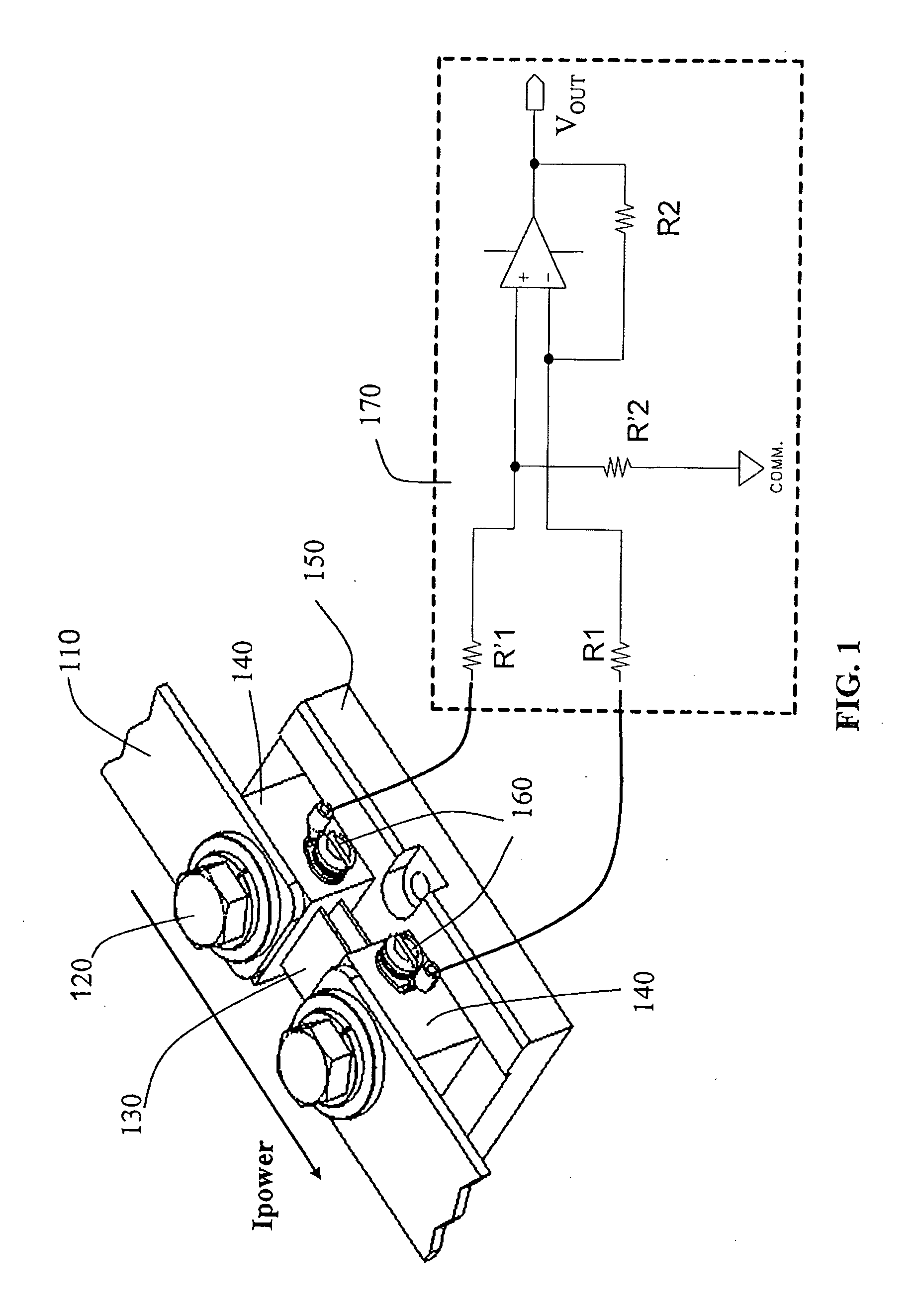Temperature-compensated shunt current measurement
a technology of shunt current and compensation, which is applied in the direction of measuring devices, instruments, electrical testing, etc., can solve problems such as amplifier gain chang
- Summary
- Abstract
- Description
- Claims
- Application Information
AI Technical Summary
Benefits of technology
Problems solved by technology
Method used
Image
Examples
Embodiment Construction
[0061]The present invention, in some embodiments thereof, relates to a shunt with a temperature-sensitive resistant element, and more particularly, but not exclusively, relates to current measurement through a shunt with compensation for temperature-related resistance changes.
[0062]Many applications require an accurate knowledge of the amount of current being carried through a current shunt. The current is evaluated by measuring the voltage drop across the shunt, and dividing the measured voltage by a known shunt resistance. However if the shunt resistance varies with temperature, the voltage measurement will not provide an accurate measure of the current through the shunt.
[0063]In order to compensate for the temperature-related changes in the voltage drop over the shunt, in some of the following embodiments a temperature-sensitive resistant element (such as a thermistor) is attached to the shunt. Changes in the resistance of the resistant element effectively control the gain of an ...
PUM
 Login to View More
Login to View More Abstract
Description
Claims
Application Information
 Login to View More
Login to View More - R&D
- Intellectual Property
- Life Sciences
- Materials
- Tech Scout
- Unparalleled Data Quality
- Higher Quality Content
- 60% Fewer Hallucinations
Browse by: Latest US Patents, China's latest patents, Technical Efficacy Thesaurus, Application Domain, Technology Topic, Popular Technical Reports.
© 2025 PatSnap. All rights reserved.Legal|Privacy policy|Modern Slavery Act Transparency Statement|Sitemap|About US| Contact US: help@patsnap.com



